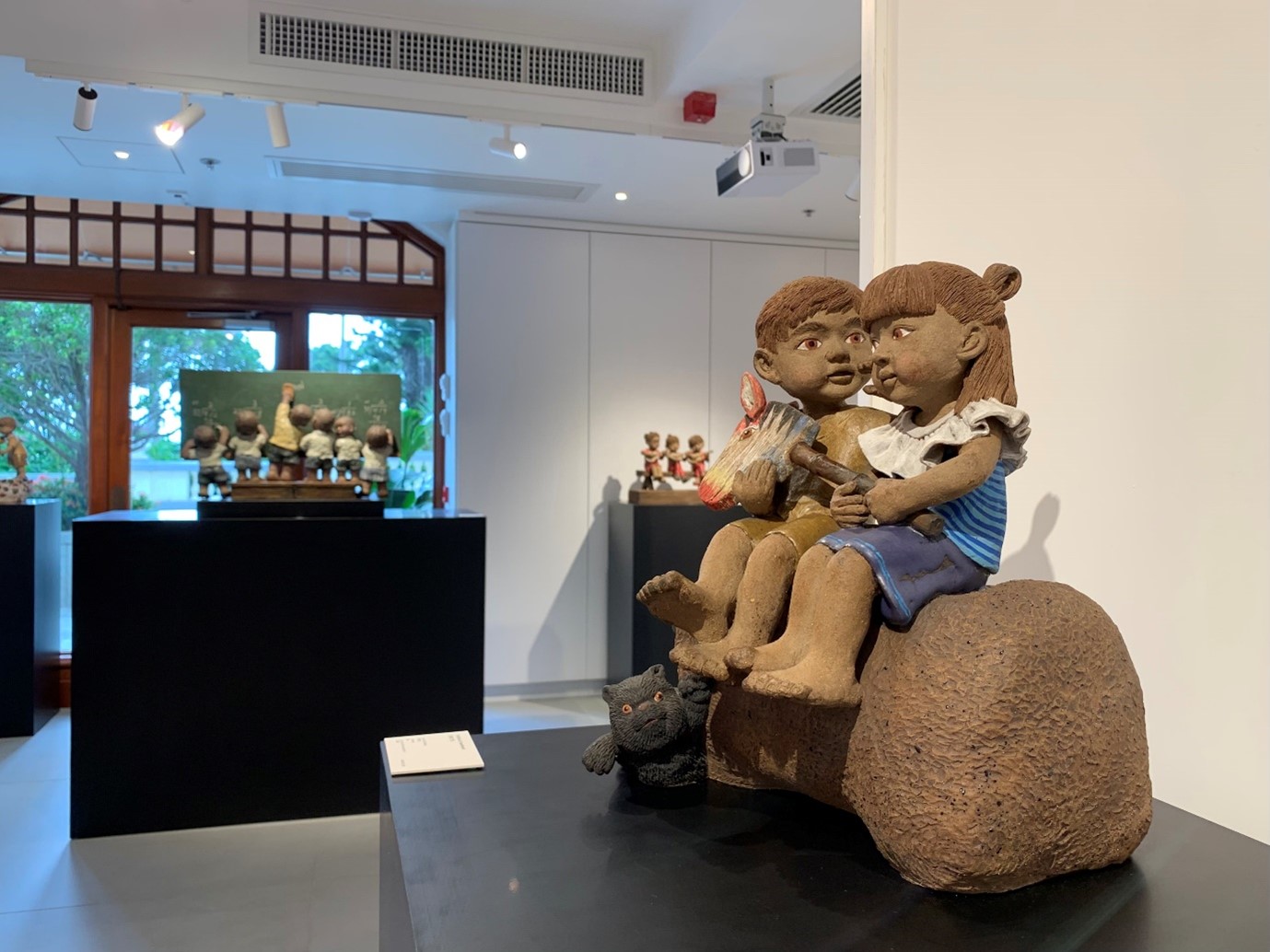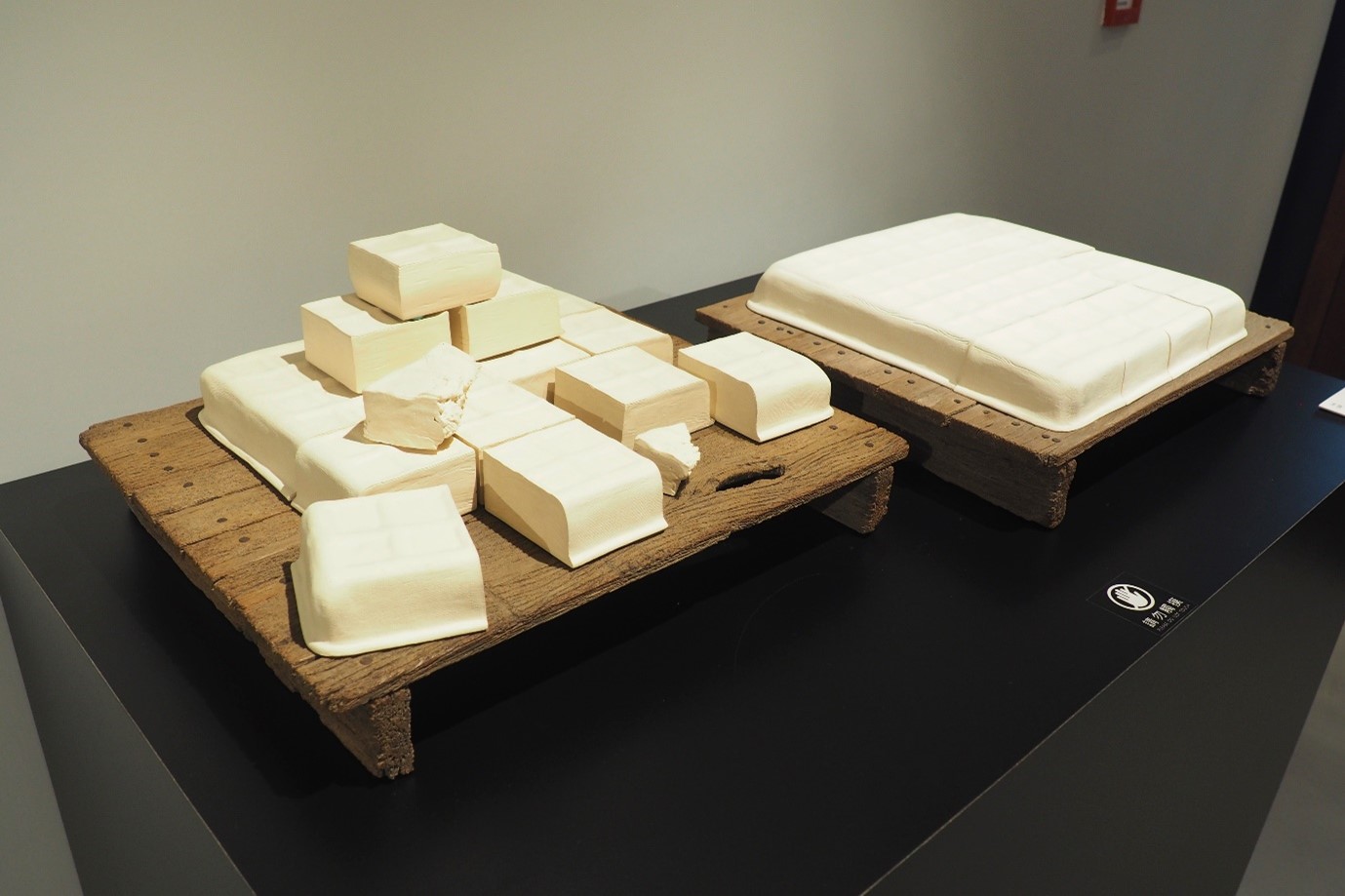The Innocence of Memory: “Childhood in Ceramic” at Artspace K
Gabrielle Tse
“As a kid, I really believed in Treasure Island,” confessed artist Leo Tang with a laugh. Recollecting how he used to dig under his bed for hidden treasure, the Taiwanese artist continued: “Nothing’s more precious than the boundless imagination of children.” As COVID-19 continues to wreak havoc on the world, these nostalgic memories prove to be a much-needed respite from reality. Titled “Childhood in Ceramic,” Artspace K’s latest sculptural show whisks audiences back into a simpler time, featuring Taiwanese artists Lee Chin-Sheng and Ah Leon in addition to Tang.
Leo Tang’s retro sculptures of tin toys, featuring perky, pink-cheeked children on different vehicles, filled one side of the gallery space. Perhaps informed by his previous experience as a children’s book illustrator, Tang handles color and texture with particular precision, such that his ceramic-made toys look convincingly metallic, an illusion augmented by painted layers of ochre-toned “rust.” Despite their subdued expressions, Tang’s figures bristle with playful energy, particularly in the Flying to the Future series (all 2021), in which children wearing helmets steered colorful, comically rounded planes. The artist’s particular fondness for tin toys can be traced back to his early childhood, when he fell in love with an Atomic Boy figure but couldn’t afford to take him home. The image of the unattainable toy, gleaming behind a shop window, was engraved onto Tang’s heart, and remained there as an everlasting symbol of his childhood years. “When people are young, they like to think forward,” reflected the artist, “but as they grow older, it’s the past that occupies their thoughts most.” Like how children breathe life into their toys, Tang imbues his sculptures with a soulful warmth, illuminating the bonds between objects, memories, and personal meaning.
Brightening up the other side of the gallery were Lee Chin-Sheng’s ceramic sculptures of playful, spirited children. With their wide eyes, stocky limbs, and rounded features, the kids looked as though they had inadvertently wandered out of a storybook illustration. Like Studio Ghibli protagonists, the children amuse themselves with idyllic pastimes, such as watching snails, petting dogs, and play-acting as superheroes. Lee’s works tend to highlight the purity of childhood relationships: riding a tricycle and wooden horse respectively, the life-sized Younger Sister and Older Sister (both 2003) smile mischievously at each other, as though imagining their next escapade. Meanwhile, in Childhood Sweetheart (2009), a boy and girl sit side-by-side on a log, their bashful smiles and barely-touching feet bringing out the shy curiosity of young love. Due to the children’s sepia hues, rural surroundings, and lack of acquaintance with modern technology, the world they inhabit is steeped in tender nostalgia. By resituating viewers in the yesteryears, Lee allows them to recall and relive their forgotten pasts.
Compared to Lee’s energetic children, Ah Leon’s ceramic sculptures of daily objects are a quieter and subtler examination of memory. Like an alchemist, the artist transmutes ceramic into other materials: Tofu (2004), featuring ceramic blocks of the titular kitchen staple, looks realistic enough to eat; likewise, a classroom desk and chair set, titled The Memory of Elementary School (2010), “has fooled visitors at an art fair into thinking that it’s actual wooden furniture,” recalled a gallery staff member. Ah Leon’s work is at once rustic and delicate: for example, Tofu’s crowning touch is the faint, mesh-like imprint upon its blocks, a nod to the traditional tofu-making process, which requires applying pressure with a handmade cloth. Taking audiences on a journey that is equal parts sensorial and meditative, Ah Leon’s use of hyperrealism links tactile presence with inner spirituality, honoring a pastoral way of life unspoiled by mass consumption or commercialization.
During the height of the pandemic, “cottagecore” – a Millennial/Gen Z-oriented subculture defined by The New York Times as the “distillation of pastoral existence” – exploded in popularity. Given the current state of global upheaval, this collective desire to seek solace in an idealized past is far from surprising. With its nostalgic atmosphere – amplified by Artspace K’s secluded, historic location – “Childhood in Ceramic” resonated with contemporary yearnings for an arcadian paradise, inviting world-weary viewers to rediscover the innocence of days gone by.
“Childhood in Ceramic”
Date: until 3 October 2021
Venue: Artspace K, G105 – 106, The Repulse Bay Arcade, 109 Repulse Bay Road, Hong Kong


